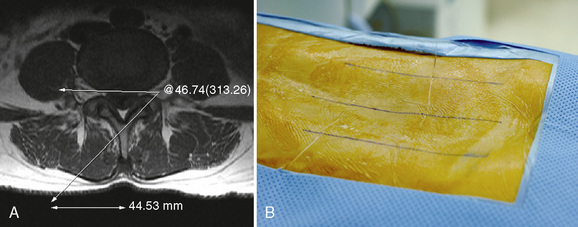Chapter 31 Percutaneous Translaminar Facet Pedicle Screw Fixation
Percutaneous translaminar facet pedicle screw fixation is a minimally invasive posterior supplementary fixation method to anterior lumbar interbody fusion (ALIF) [1–3]. The screws are inserted percutaneously through stab wounds under fluoroscopic guidance.
Biomechanical studies of ALIF revealed that it does not limit extension and axial rotation of the spinal motion segment [4–6]. However, supplementary translaminar facet fixation has been shown to be an effective method to stabilize extension and axial rotation [7,8]. Translaminar facet screw fixation has also been demonstrated to enhance fusion [9–16].
The percutaneous translaminar facet pedicle screw fixation method described here is a modification of the translaminar facet fixation method first described by Magerl [17], in which the screw is inserted into the pedicle through the facet joints. Transfacet pedicle screw fixation showed biomechanical stability equivalent to that of conventional pedicle screw fixation when it is used to augment to ALIF [18].
Percutaneous translaminar facet pedicle screw fixation gives immediate postoperative spinal stabilization after ALIF and therefore enhances fusion while preserving posterior spinal elements [1,2,15]. The advantages of percutaneous translaminar facet screw fixation are that it is a safe, economical, efficient, and minimally invasive procedure [3].
Indications and contraindications
Box 31.1 lists the indications for and contraindications to percutaneous translaminar facet screw fixation.











